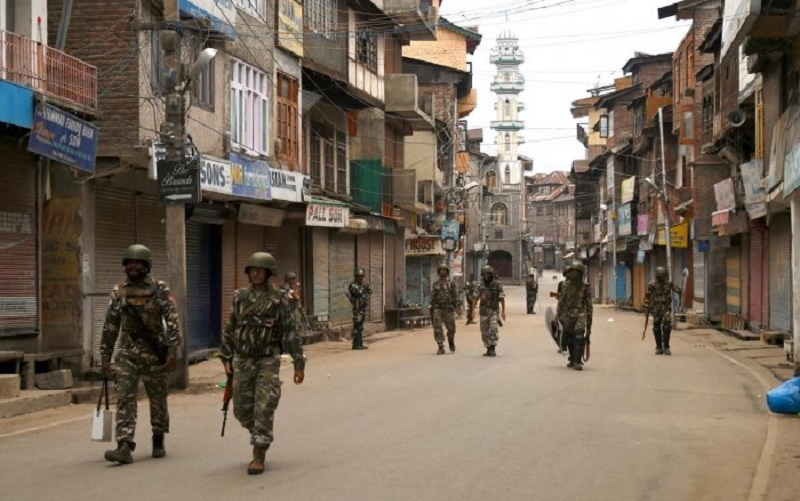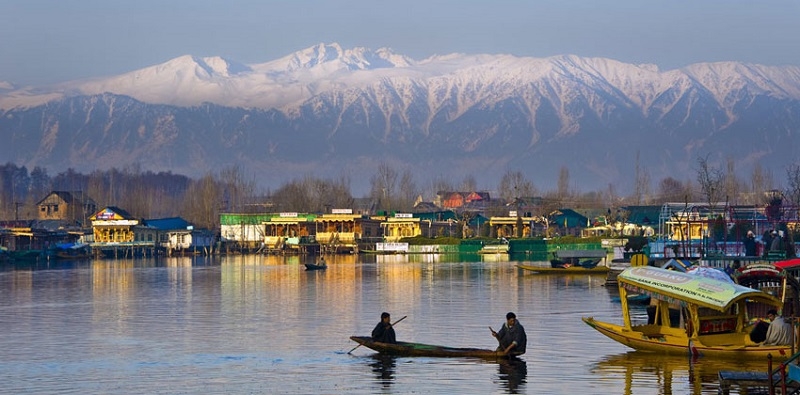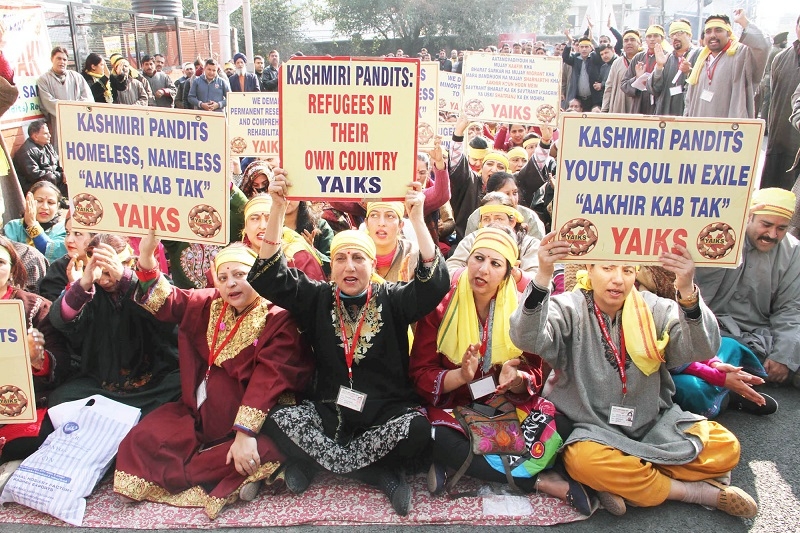Jammu & Kashmir: Beyond 370

For people of India, revocation of Articles 370 and 35-A was a dream come true; most of us did not doubt intentions of the ruling dispensation in this regard as it had always included the abrogation of the said articles in its successive poll manifestos, however, nobody was sure about the timing. Now the first part, which required passage of the bill in both the houses of parliament, is over with the meticulous planning by the government. The second part, which involves unfolding of agenda of development in the UTs of Jammu & Kashmir and Ladakh, is most important, and owing to external factors, the most difficult to implement. Following are the factors which require short term as well as long term initiatives from the central government; needless to say participation of people of both the UTs is indispensable.
Law and Order: At present situation of law and order in the ten districts of the Kashmir valley is perceived to be highly sensitive. As and how, the restrictions are going to be relaxed, people on the insistence of and provocation from Pakistan, will be out on the streets and in all probability, protests will test the patience of the security apparatus. Pakistan has no love and affection for the people of J&K; it wants maximum number of Kashmiris to turn terrorists so that when they are eliminated in encounters with the security forces, the former can indulge in international propaganda of human rights violation. In all probability, the terrorist nation will use all its contacts in the valley to stoke the separatist fire and create trouble.
The mainstream political parties of the valley like PDP and NC have all along opposed abrogation of Article 370. When their leaders come out in the open in the next few days, they too are expected to pander to their respective political constituencies and will indulge in theatrics to arouse sentiments. No doubt, the security forces have an unenviable task of maintenance of law and order at their hands.
The key to the establishment of peace and harmony lies in the steps, the centre takes to communicate with the people and convince them that Article 370 and 35-A were the biggest impediments in the development of the state. Some measures which infuse confidence in the population in this respect should be taken post haste. Security forces will have to show utmost restraint and handle the situations very tactfully. Abdulla duo and Mehbooba can play a historic role if they abandon their old stand in respect of special status to the state of J & K and call upon the people to participate in the journey of development which India as a nation has embarked upon.
As statements from Pakistani leadership are emanating, it is clear that it is not going to silently witness full integration of the state of J&K into India. There can be instances like that of Pulwama as already admitted by Pak PM Imran Khan during his address to the joint session of parliament of that country. In that scenario, our retaliation should be disproportionate to Pakistani misadventure; surely the action will act as a big deterrent to further mischief mongering by the said country.
There are marginalised groups within the Kashmir valley whose voices had been throttled by the separatist elements as well as political parties. These groups comprising Gujjars, Bakarwals and Pahadis have been systematically kept out of the benefits accruing out of central funds being provided to the state for the past so many decades. These factions should be immediately taken into confidence and they will very happily carry the goodwill, which rest of India holds for people of J&K and Ladakh, into the masses. Most of the funds provided by the central government to the erstwhile state of J&K were siphoned out by the selected politicians of the state. Now, if communication lines are established with the Sarpanches of the villages and direct fund transfer mechanism is put in place, a confidence building exercise will be initiated. These measures will help a lot in normalising the situation especially in the Kashmir valley.
Delimitation process: The Union territory of Jammu & Kashmir is going to have its own legislature. Before the elections for the UT are called, delimitation process of the electoral constituencies should be initiated. At present, the Jammu division has a larger area and bigger population than what they are in the Kashmir division. However, in the assembly, Kashmir division had more number of seats creating an imbalance in the rightful electoral representation. Once delimitation process by the Election Commission of India is done, the Jammu division will have more amount of representation in the assembly. Till now, politicians from Kashmir valley had monopolised the chair of the Chief Minister of the state; after delimitation, the post can be occupied by anybody either from the Kashmir region or from Jammu.
Tourism: Because of the law and order considerations, tourism in the valley has received a huge setback. Even Amarnath Yatra had to be aborted before its stipulated time frame. Short-term as well as long-term measures have to be devised to strengthen and revive the tourism in the area. The message, that people from the rest of India love Kashmir and its people and even during the height of militancy kept on visiting in hordes, should be delivered to the people in the valley. Tour operators, Shikara and House boat owners, Hoteliers, Taxi drivers, Restaurateurs and dealers in Dry fruits and Handicrafts, all should be taken on board to create a harmonious atmosphere in the valley so that the season of tourism can be reinitiated.

Because the reins of power had remained in the hands of the politicians belonging to the valley, areas falling in Jammu division and Ladakh had been grossly neglected. Old Mughal road which encompasses areas like Poonch, Rajauri and Surankot in Jammu division has unexploited treasures of natural beauty; Patnitop and areas in Doda district too can be developed as attractive destinations.
Ladakh too apart from Leh, Nubra Valley and Pangong lake, has unaccounted natural wealth which can be developed as tourist hubs. Kargil has become a pilgrimage centre in its own right in nationalist terms. The only thing which is lacking, when we compare our natural wealth with similar kinds of foreign destinations, is adequate infrastructure.
Spiritual tourism is another area which can be promoted in both the Union territories. Till now, the most popular pilgrimage destinations have been the Amarnath cave in Kashmir valley and Mata Vaishno Devi shrine in the Jammu division. In Kashmir, scores of other historically important religious places are there which include Detha temple in Uri, Shankar Gaurishwar temple in Patan, Sindhu-Jhelum sangam in Naranbagh, Kheer Bhawani temple; Shankaracharya, Jyeshtha Devi, Ganpatyar, Sharika Devi and Durganag temples in Srinagar: Avantipora, Anantnag, Martand and Mattan Temples which should be put on the map of spiritual tourism.
There are numerous Buddhist shrines in both Kashmir valley and Ladakh which if properly developed can attract a good amount of tourists including from abroad. Hazratbal shrine in Srinagar is highly revered, Dargah of Baba Reshi who is known as a symbol of syncretic traditions near Gulmarg and Charar-e-Sharif in Budgam district will be visited by millions when normalcy prevails. In the Jammu division too, unlimited potential is there to develop spiritual tourism; since the area was neglected for the past so many years, there is every possibility that people will not spare any effort to reclaim their rightful recognition. Sikh pilgrimage centres like Gurdwara Chhevi Patshahi in downtown Srinagar which has historical importance and Gurdwara Patthar sahib in Leh where Guru Nanak Dev ji had visited during his Udasi of northern India, will also attract more number of devotees once things get normal.
The bottom line to be delivered to the people of Kashmir valley in particular is, they should ensure a peaceful atmosphere and it becomes the duty of this nation to build the best hill station destination in the world: better than even Switzerland. The people of Kashmir should have confidence in their brethren from the rest of India that there will not be paucity of investment when it comes to creating comprehensive infrastructure to attract indigenous as well as international tourists.
Rehabilitation of Kashmiri Hindus: One of the most tedious jobs at the hands of the central government is to rehabilitate displaced Kashmiri Hindus at places from where they were unceremoniously expelled, earlier in slow streams and later in the year 1990, en masse. The second generation of them, owing to its exceptional talent and support rendered by the Indian universities, has found decent occupations not only in India but in abroad too. Obviously, the said generation is not willing to go back leaving its promising careers. Secondly, theatrics notwithstanding, the separatist elements in the valley are not going to welcome back those Hindu families which were threatened and made to leave the place which originally was cultured by their ancestors.

Kashmiri Hindus are the original inhabitants of the valley of Kashmir and their ancestors created a cultural stream which is an inseparable part of the overall cultural ethos of India. The Jihadists in the Kashmir Valley had attempted to ethnically cleanse the land by forcibly pushing Hindus out of the valley. The nefarious designs of these forces cannot be allowed to succeed. The idea of India is incomplete without Kashmiri Hindus being resettled in the land of their origin. In this endeavour, the biggest initiative has to be taken by the evicted families themselves; they might have found accommodations and occupations in rest of India but recovering their old properties should also be prioritised by them.
Development process: Enough has been written that due to Articles 370 and 35-A the development process of the state of Jammu and Kashmir could never gain momentum. With revocation of the said article, now is the time to initiate the process and the roadmap should be shared with the people at every possible forum. Now with the bifurcation of the state in two Union territories, plans for both the areas have to be envisaged separately. Kashmir Valley can be developed as the best tourist destination of the world; how in the short and long term government plans to do that must be made public. The initiative will act as a confidence building measure among the masses and act as a potent antidote to the Pakistani propaganda. Environment friendly industries too have a lot of scope to be started there; many leading Indian industrialists, including the Reliance group, have already expressed their intentions to invest there. Both the Union Territories of the J&K and Ladakh are mountainous regions and conservation of their ecology is an important factor. All the development plans must be chalked out keeping the said factor in view.
Countering Pakistani propaganda: The key, to bring normalcy and development in the Union Territory of J&K in general and its Kashmir Valley in particular, lies in the way we counter and overturn the Pakistani propaganda. The terrorist country indulges in a two pronged strategy: it infuses jihadism among the masses and keeps on sending trained terrorists from its land into Kashmir on one hand and plays the victimhood card on the international forums on another.
To counter the sinister designs of Pakistan, we have to take the following steps. The world has to be told that the Instrument of Accession signed by Maharaja Hari Singh with the Union of India is as legal and irrevocable as the other instruments of accession signed by 560 odd princely states with India. The constituent assembly of the erstwhile state of Jammu & Kashmir had ratified full integration of the state in the Union of India. Articles 370 and 35 -A were temporary constitutional provisions and they have been revoked by both Houses of Parliament in the best of democratic traditions.
The separatist movement instigated on behalf of Pakistan in the Kashmir Valley is nothing but an arm of global Jihadism propagated by Al Qaida and ISIS. The world community has to be warned about it and to be told in no uncertain terms that the if Jihadist philosophy is not countered effectively, it will not leave the world as a happy and peaceful place to live in.
Actual victims of the Islamist tirade in Kashmir valley are Kashmiri Hindus. To defeat Pakistani propaganda, representations of the Kashmiri Hindu delegations should be taken to the world capitals in general and to members of the Security Council in particular. Let the world know how much our nation has suffered at the hands of the Jihadists.
Internally, Kashmiri youth should be made a party to the development story of India. On school and college levels, interactive sessions should be organised and both the scenarios, India’s success story and Pakistan’s fate of a failed state, should be juxtaposed in front of the youth. They should be asked whether they want to become part of the ISRO team which sends spacecrafts to the Moon and Mars or they want to become members of Fidayeen squads created, indoctrinated by Pakistan to foment trouble everywhere in the world. The exercise, one can surmise confidently, will have a positive effect among the cross sections of the Kashmiri society and will minimise Pakistani influence amongst it.
Revocation of Articles 370 and 35-A indeed is a historic moment. Let us all come together and embark upon our noble cause of nation building; Union territories of J&K and Ladakh are an integral part of Bharat; waters of Indus and Jhelum will stand testimony to the fact that the message of peace of sage Kashyap is delivered to the world.
